You may be familiar with the basics of how solar panels work — they absorb sunlight and transform it into power you can use to heat or cool your home, or operate your appliances. But what’s inside solar panels allowing them to generate clean electricity?
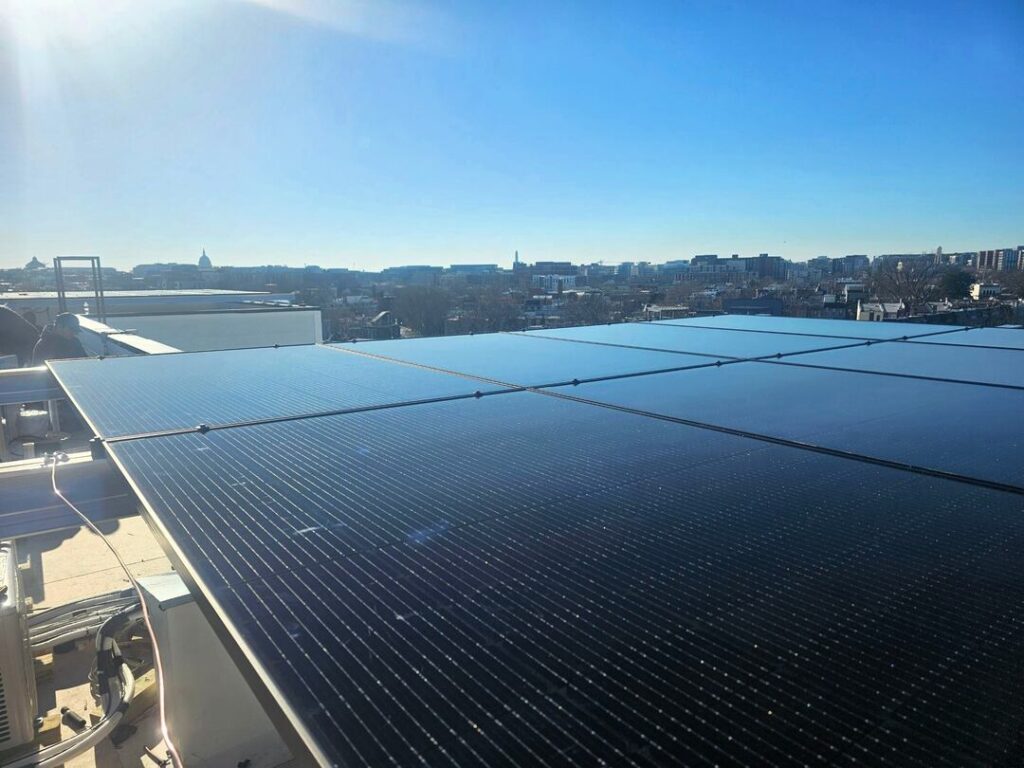
Solar Panel Materials
84% of solar panels in the United States are crystalline silicon (the other 16% are cadmium telluride). On a basic level, a crystalline solar panel consists of silicon solar cells on top of plastic covered by glass, surrounded by a metal frame. Ethylene vinyl acetate glue holds it all together.
A typical solar panel, according to the Institute for Sustainable Futures, contains 76% glass, 10% polymer (for the backsheet behind the solar cells), 8% aluminum (the metal frame), 5% silicon, 1% copper, and less than 0.1% silver and other metals such as tin.
Silicon is the magic-maker here. It’s a semiconductor: a material that conducts electricity not as well as a metal, but better than an insulator. As a semiconductor, silicon absorbs energy from sunlight, allowing electrons in the material to flow as an electrical current. (It’s direct current, and microinverters, connected to each panel, convert that direct current into the alternating current your home utilizes.)
Getting technical, silicon dioxide and carbon combine in a furnace to create metallurgical-grade silicon, which is further refined with the help of hydrochloric acid and hydrogen gas to create polysilicon, a purified version of silicon. The polysilicon is melted to create monocrystalline silicon ingots. Slicing those ingots makes silicon wafers. Phosphorus and an anti-reflective coating are added to the wafers to turn them into solar cells. Solar panels typically have 60 or 72 solar cells inside them.
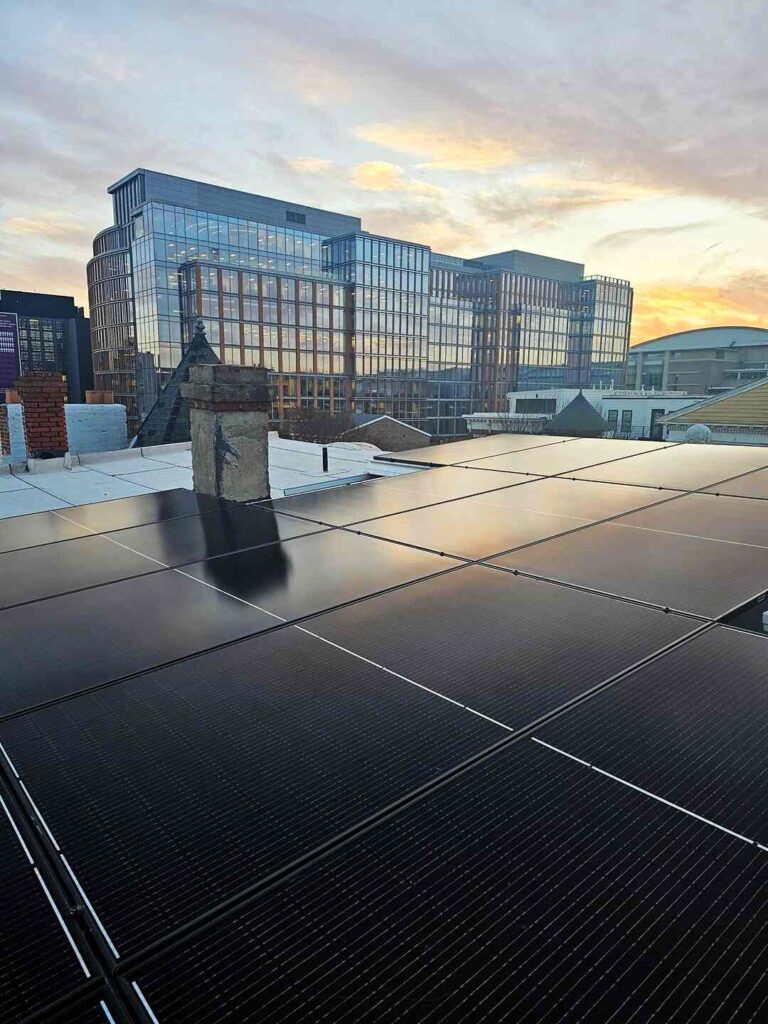
If you look closely at the pictures of solar panels in this blog post, you’ll see lines on the panels. Those are metal strips, typically silver, that transport the electrical current. And copper comes into play in the form of wiring that also helps move the current within the panel. If you want to nerd out even more over the ins and outs of the manufacturing process, check out the Department of Energy’s Solar Photovoltaic Manufacturing Basics article.
Although solar panel recycling isn’t yet common, it is possible. If you read Uprise’s blog post on solar panel recycling, you may remember that most of those components mentioned above, particularly glass, are materials we already know how to recycle.
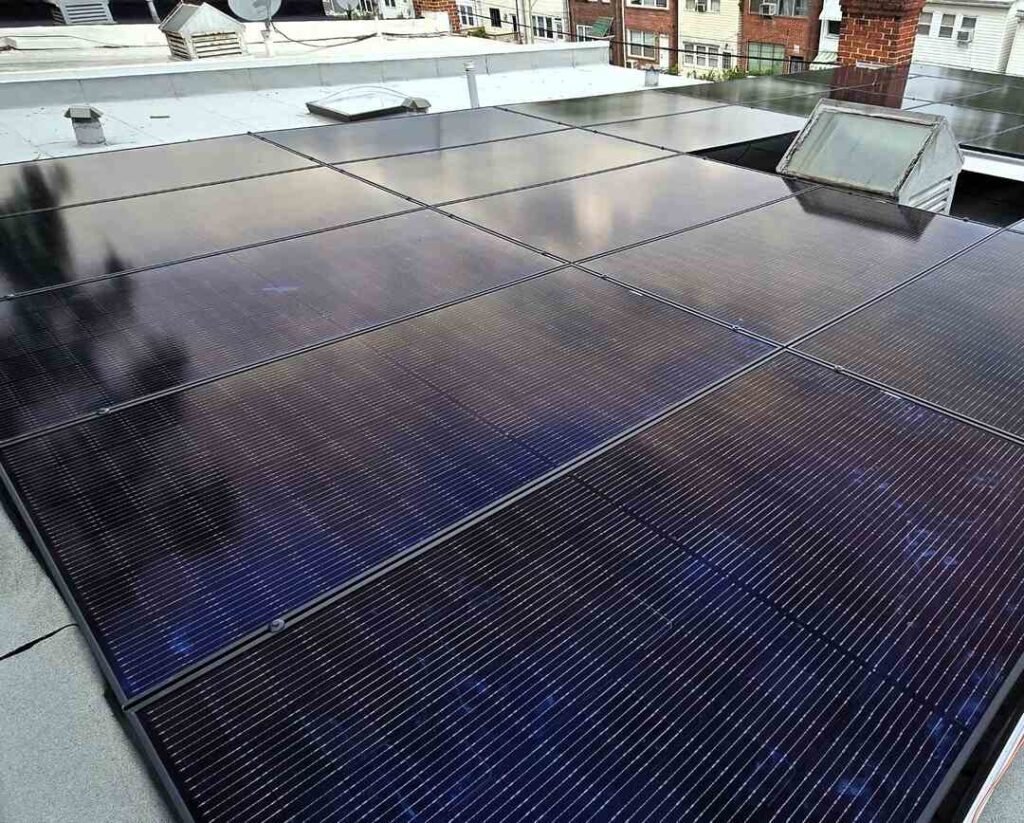
Solar Panel Efficiency
Solar panels don’t convert all the sunlight that hits them into electricity. Characteristics of the light hitting the panel (think wavelengths or intensity) impact how much light the panels convert; so do temperature and panel angle. There isn’t a solar panel out there that has hit 100% efficiency yet — most residential solar panels reach around 21% efficiency.
However, scientists are working on making solar panels more efficient! Check out Uprise’s Solar 101 blog post for more.
Monocrystalline vs. Polycrystalline Solar Panels
If you’ve researched solar panels, you may have come across the terms monocrystalline or polycrystalline. What do those names mean?
First, both types are made from silicon; the main difference is in how the solar cells are manufactured. Monocrystalline wafers come from one silicon ingot (the process described above), while polycrystalline (also called multi-crystalline or many-crystal) wafers come from silicon fragments melted together.
How does that impact aesthetics and performance? Monocrystalline solar cells are black, with efficiencies of 17 to 22%. Meanwhile, polycrystalline solar cells are blue, with efficiencies of 15 to 17%. Both come with 25-year warranties. Uprise commonly installs monocrystalline solar panels.
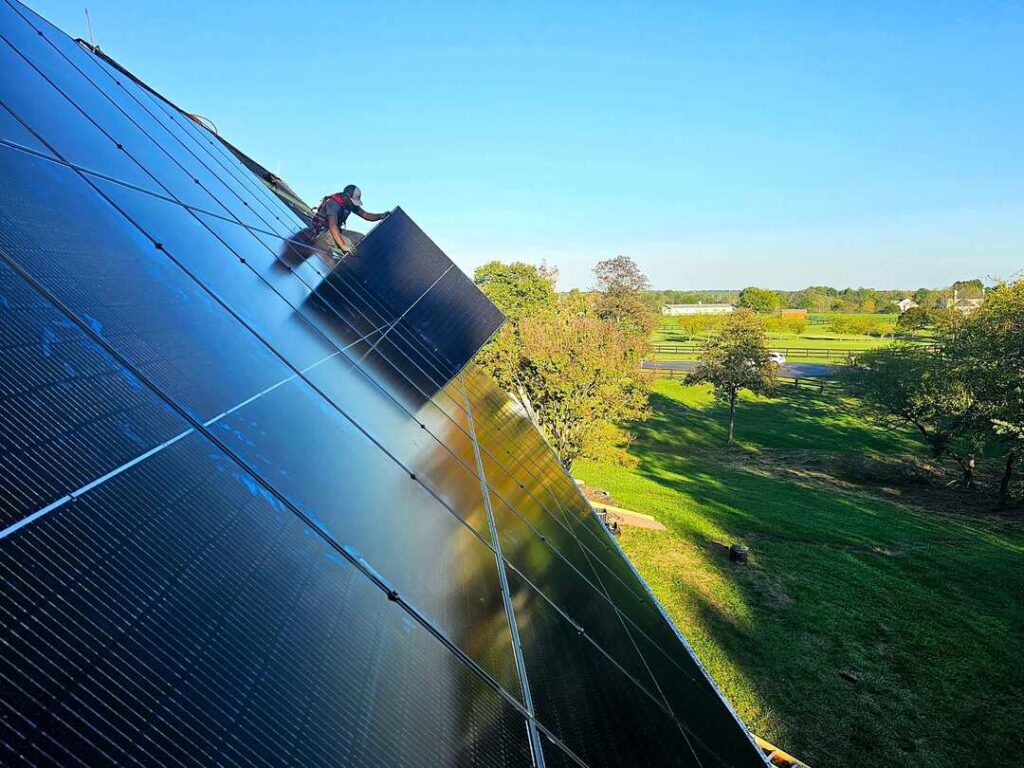
What Are Thin-Film Solar Panels?
Remember cadmium telluride solar cells, mentioned briefly above? Those are thin-film solar cells, or flexible, lightweight solar cells. As of now, they’re deployed more for commercial installs. Since they’re not as efficient as monocrystalline or polycrystalline solar panels, they require more space. They also tend to not last as long.
There are other types of thin-film solar cells, such as copper indium gallium diselenide, which share similar pros and cons with cadmium telluride solar cells (with the additional hurdle of being harder to take from a lab setting to manufacturing). Perovskite solar cells are another thin-film solar type, but they’re even less commercially viable at this point. They’re still not stable enough to work for 20 years outdoors. But efficiencies in the lab are incredibly promising. Scientists are researching how to make perovskite solar cells more durable, and are exploring ways to manufacture them at lower costs.
Thin-film solar cells may become more promising in the future (for example, in applications like building-integrated photovoltaics), and the U.S. Department of Energy’s Solar Energy Technologies Office is supporting research into maximizing cadmium telluride solar cells’ efficiency and combining cadmium telluride with silicon, among other research areas. The Biden-Harris administration included thin-film solar research in a $71 million investment in American solar manufacturing earlier this year.
What Are Bifacial Solar Panels?
Another term you may have heard is bifacial solar panels — in fact, if Uprise installed solar for you, you may even have bifacial solar panels on your roof already. Traditional (or monofacial) solar panels absorb light from one side, but bifacial solar panels absorb from both sides, taking in direct sunshine on the top of the panel and light reflected from your rooftop through the panel underside.
As you may expect, bifacial solar panels can generate more power since they can absorb from both sides. Instead of a polymer backsheet, bifacial solar panels typically have a glass backsheet to allow for sunlight absorption.
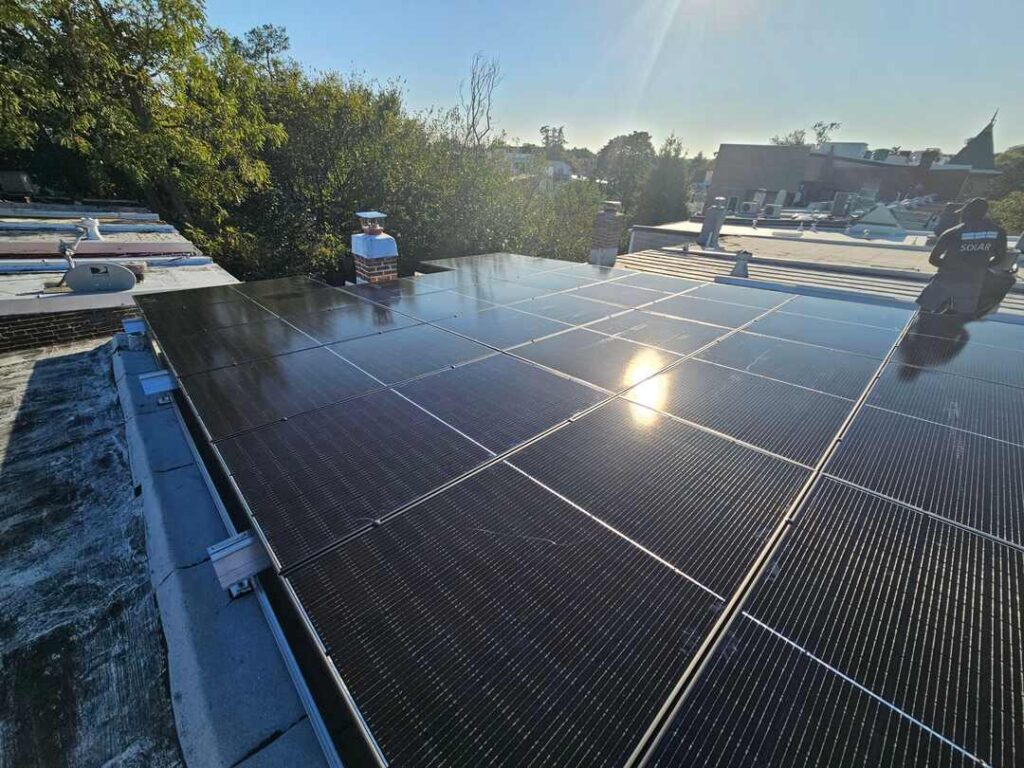
Other Solar Questions?
Reach out to Uprise! We’d be more than happy to answer your solar questions. Your initial conversation with your sales representative is a great place to ask these questions, but if you’ve already had solar installed, feel free to reach out to us and ask away. You can schedule a consultation here or call us at (202) 280-2285.
